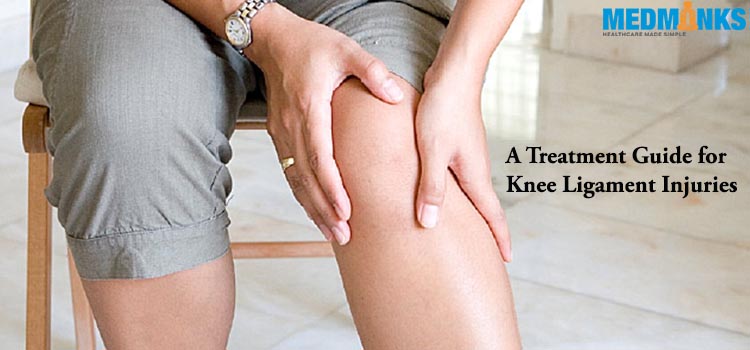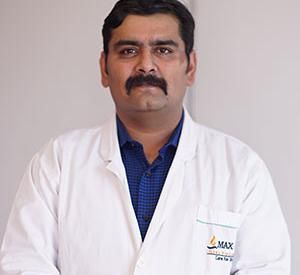A Treatment Guide for Knee Ligament Injuries

A ligament is a flexible, tough fibrous band of connective tissues that holds or connects two cartilages or bones. The damage in knee ligaments can result make the knee unstable, making it painful for the patient to perform their daily tasks disabling them to turn, twist or pivot their leg. Knee Ligament Surgery focuses on repairing this condition. Knee Ligament is commonly damaged by sports injuries, as it requires sudden movement which is the most common cause of ligament damage. Knee Ligament Surgery is an option opted to repair the ligament when other treatments fail to be effective.
Knee Ligament tore, or injury cannot be detected through an X-Ray, as it only provides graphic images of the bones. Soft tissue structures of ligaments require an MRI to recognize any form of damage. However, most physicians recommend both these test, X-Ray, and MRI if the patient shows any symptoms that can be interlinked with knee damage, to ensure that the patient hasn’t broken his/her bone.
Type of Ligament in the Knee
- ACL - Anterior Cruciate Ligament – controls the forward movement and the rotation of the shin bone (tibia) that is located in the centre.
- PCL - Posterior Cruciate Ligament – controls the backward movement of the shin bone (tibia) that is also located in the centre.
- MCL - Medical Collateral Ligament – is the ligament that provides stability in the inner knee.
- LCL - Lateral Collateral Ligament – is the ligament that boosts stability in the outer knee.
Symptoms of Torn or damaged Ligament
- Persistent Knee Pain
- A loud snap or pop during the injury
- A sense of looseness in the knee joint
- Inability to put pressure or weight on the joint
- Intense swelling within a few hours after the injury
These are some of the alarming signs that require immediate attention, especially if the patient has experienced an ACL injury that demands surgery to stabilize the knee.
Knee Ligament Treatment
Nonsurgical Knee Repair Treatments
- Rest
- Regular Ice Pack Application (to help reduce swelling that usually occurs a few hours after the injury)
- Elevation
- Pain Relievers
- Muscle Strengthening Exercises
- Lifestyle Changes (including activity limitations)
- Using a protective knee brace (during exercise)
These are some of the knee repair treatments that can be considered while facing minor knee ligament injuries.
Note: In some cases, surgery can be required urgently, so avoid delaying it, as the waiting time might lead to infection, internal bleeding, or blood clots.
Knee Ligament Surgery
A torn Anterior Cruciate Ligament (ACL) cannot be repaired solely by stitching the ligaments back together. It needs to be reconstructed which can be done by grafting (attaching) a new tissue on the damaged ligament.
ACL is reconstructed by getting rid of the damaged or torn ligament that is then replaced with a tendon that is extracted from a different area in the leg which includes patellar tendon or the hamstring. Then the patellar tendon is attached to the top portion of the shinbone (tibia), to the bottom of the patella (kneecap).
This surgery can be performed using a few approaches which include:
Graft Tissue Replacement
ACL can be replaced by multiple tissues, which can be autografted from the patient’s body or can be extracted through an allograft (donor). Allograft tissue is more preferred for people who don’t plan on indulging in any sports activities, as the structure of these tendons is slightly weaker than the ACL ligament.
Arthroscopy
A form of keyhole surgery that is performed using an arthroscope (a flexible thin tube constructed with a collection fibre-optic strings) which acts as a camera and light source during the operation. In this procedure, small incisions are made on the knee which is used to insert the arthroscope inside.
Now surgeons are also using synthetic tissues for treating multi-ligament injuries and revision surgery. While using artificial membranes, the graft tissue is removed from the body and sliced to a precise size. Then it is placed inside the knee and is fixed with the femur (thigh bone) and tibia (shin bone). This procedure also requires the use of an arthroscope.
Knee Ligament Surgery Cost in India
The cost of knee ligament surgery can is subject to vary depending on the severity of the case. An ACL injury that interrupts with the patient ability to twist and pivot require immediate surgery which cost starts from USD 7500. However, some minor ligament repair surgery procedure can cost starts from USD 2500.
FAQs
How much time does it take to recover after knee ligament surgery?
The recovery time required by the patient depends on the severity and the location of the ligament injury. Grade I sprains heal in just a few weeks. Maximal ligament will approximately take six weeks to mature its collagen fibres to restore its strength. Regular icing, consumption of anti-inflammatory medications, and taking precautions to avoid activities that require extra strength can speed up the recovery.
What are the risks of getting a knee ligament surgery?
Like any other surgery, knee ligament surgery can cause blood loss, blood clots or if performed incorrectly can also worsen the condition of the knee.
You can explore Medmonks.com to learn more about different types knee surgeries and the best surgeons practicing in India.





